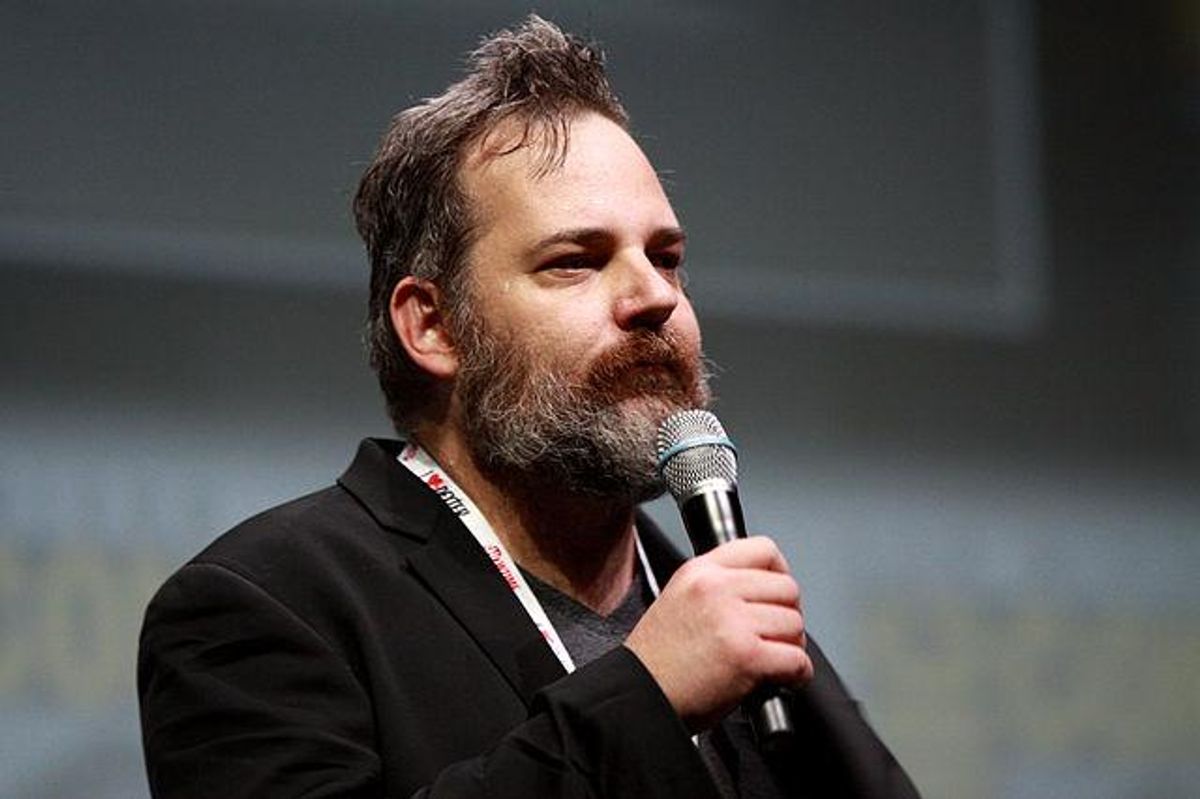Dan Harmon accused Hallmark of recycling one movie into two. The truth blew his mind.
Harmon called the "Sister Swap" explanation "cinematically unprecedented."

Dan Harmon in 2013.
Hallmark movies tend to be predictable holiday fare, so it’s safe to say that Rick and Morty creator Dan Harmon wasn’t off when he cried foul after learning about the Sister Swap films.
Harmon saw there were two Sister Swap Hallmark movies that came out in 2021 and couldn’t tell which one to watch first. “Well HERE’S THE THING,” Harmon wrote on Instagram, “both Sister Swaps are released in 2021. They are not sequels. Both Sister Swaps are the same story, about sisters—played by real-life sisters, who have to swap…cities.”
In a world where Hallmark churns out 40 holiday films a year, it’s reasonable to think that the company was trying to pull a fast one and save some money by making two identical films and releasing them separately.
The Sister Swap films star real-life sisters Kimberly Williams-Paisley and Ashley Williams, whose characters are siblings as well. The first film, Sister Swap: A Hometown Holiday, is about a widow who attempts to reopen her late uncle's old dilapidated small-town movie theater for one last Christmas screening. Sister Swap: Christmas in the City, which debuted seven days after, is about sisters who swap cities to pursue new projects in the 12 days leading up to Christmas. Harmon was thrown by the fact that the films shared several scenes with identical dialog.
“We keep going back and forth between the movies,” Harmon said, trying to make sense of them. “The same conversations are happening in each one but there’s no ‘Rashomon’ or ‘Peep Show’ angle, the dialogue in each version is identical but the scenes are cut differently because I assume they just had different editors.”
Akira Kurosawa’s masterpiece Rashomon is known for its unique structure where the same story is seen from multiple perspectives.
Harmon shared another post where he lined up a scene from both nearly identical films.
Finally, Harmon’s confusion was assuaged when the people who made the film showed up in the comments. The films’ co-screenwriter, Zac Hug, explained what Hallmark was trying to do with the movies.
“Quick note on this, the task in writing was to make sure the audience didn’t have to see them both but were rewarded if they did. Hallmark also got on board with my sister and me writing them together,” Hug wrote.
Williams-Paisley confirmed that the decision to combine the two films was to do something unprecedented with a Hallmark production. "We wanted to do something outside the box for the genre but also stay in the genre and my sister came up with this brilliant idea of two films that take place in the same time frame and sometimes overlap," Williams-Paisley commented.
Executive producer Neal Dodson further clarified things for Harmon. "We had one editor and edited them in tandem," he wrote. "They share 9 scenes, with different edits to those scenes that favor whichever sister's movie it is."
Harmon clearly understands the medium of film—he created the hit series Community and Rick and Morty—yet he missed the fact that Sister Swap was a total revolution in the art of making Hallmark films.
After hearing about the movies from the artists themselves, he changed his mind and said the films were "cinematically unprecedented."
The films are truly a departure from the usual movie format, not just for Hallmark, but TV movies in general. But, before we get too excited, the productions also probably saved a few nickels by shooting two films at the same time.
This article originally appeared three years ago.

